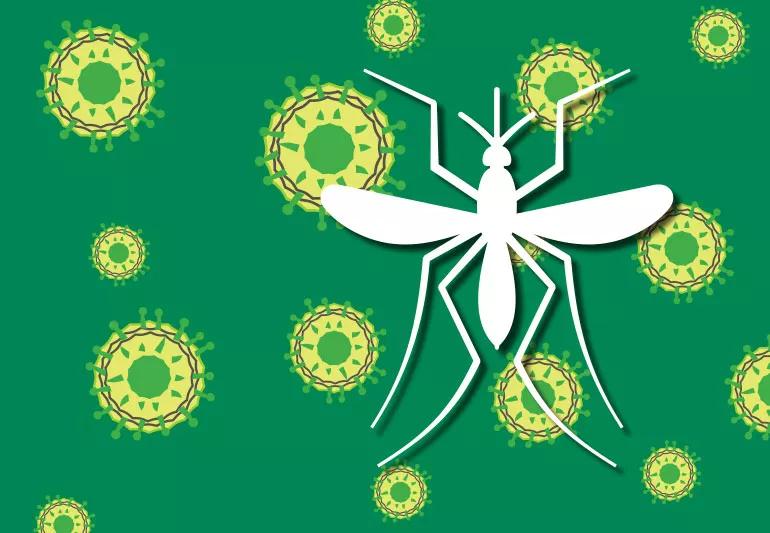It’s very rare in humans, but there are steps you can take to protect yourself

If you’ve read or watched the news lately, you may have heard warnings about a rare but dangerous virus called Eastern Equine Encephalitis that’s hitting certain parts of the country harder than usual.
Advertisement
Cleveland Clinic is a non-profit academic medical center. Advertising on our site helps support our mission. We do not endorse non-Cleveland Clinic products or services. Policy
More than a dozen people have been sickened by EEE — or “triple E” — so far this year, according to data from the Centers for Disease Control and Prevention. Typically, only 5 to 10 human cases are reported to the CDC each year.
EEE is an arbovirus, which means it’s spread by mosquitoes (similar to West Nile or Zika), that can cause a severe, sometimes-deadly infection in the brain.
Though it’s dangerous, it’s also important to remember that the infection is still extremely rare in people, says neurological infectious disease specialist Adarsh Bhimraj, MD.
“This virus generally doesn’t want to be in humans because we are dead-end hosts, meaning we don’t develop enough of the virus circulating in our blood to pass it on,” he says.
As mosquito season carries on, here’s what you should keep in mind.
EEE is not common in humans because it’s mostly passed between birds and a certain type of mosquito that feeds on birds.
But, it can be transferred to mammals, such as humans or horses, if infected birds are bitten by other kinds of mosquitoes that also feed on mammals. You can’t get EEE from an infected human, or from any other kind of infected mammal.
Because it’s spread by mosquitoes, the infection tends to be the biggest threat to warm, wet, mosquito-friendly climates, like those in the Northeast, Great Lakes and Gulf Coast regions.
You can’t know if you have the virus just by looking at a mosquito bite. “Most people, if they have a reaction to a mosquito bite, that’s an allergic reaction,” Dr. Bhimraj says.
Advertisement
The majority of people who are infected with the EEE virus develop no symptoms or get a mild flu-like illness. The CDC reports that only about 4 to 5% of people who are infected develop dangerous brain swelling (encephalitis).
Those symptoms usually set in within 4 to 10 days after infection and may include:
Although there is no specific treatment for this infection, anyone with these symptoms should seek immediate medical care. Healthcare professionals can provide supportive care in the form of IV fluids, breathing support and prevention of other infections.
The best thing you can do to avoid EEE is straightforward — protect yourself from mosquitoes.
The CDC recommends you:
“These are universal precautions we should be taking anyway,” Dr. Bhimraj reiterates.
Advertisement
Learn more about our editorial process.
Advertisement

Most recommended precautions center around minimizing bruising or swelling

Even one drink can have an impact on your cognitive function leading to slurred speech, blurred vision and impaired memory

Understand who may (and may not) benefit

Lorem ipsum dolor sit amet. Et odio Quis vel ipsam omnis eum alias deleniti et placeat impedit non voluptas galisum hic autem enim et cupiditate aliquid. Est beatae quidem non facilis autem ut commodi nisi aut tempore rerum et dolores voluptatem cum enim optio id sapiente quasi. Ad laboriosam officiis 33 cupiditate sequi ea voluptatum consectetur qui necessitatibus voluptate et quasi doloremque et facere explicabo quo explicabo officia

Seeking help through therapy can be an important step in improving your quality of life when you have UC

Type 2 diabetes isn’t inevitable with these dietary changes

Applying a hot or cold compress can help with pain